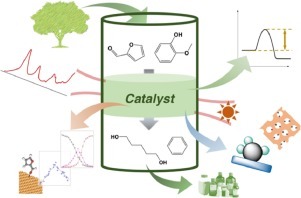#CatalystPerformance
Explore tagged Tumblr posts
Text
Effect Of Pressure Difference Of SCR Denitration Catalyst On Denitration Efficiency
#Denitration#SCRCatalyst#PressureDifference#CatalystTechnology#EnvironmentalScience#IndustrialProcesses#CleanEnergy#EmissionControl#AirQuality#GreenTech#PollutionControl#IndustrialCatalysts#GreenTechnology#SCRTechnology#EmissionReduction#CatalystPerformance
0 notes
Text
Catalyst Market: Charting New Pathways for Growth in an Evolving Market
The global catalyst market size is expected to reach USD 42.63 billion by 2030, as per the new report by Grand View Research, Inc. The market is expected to expand at a CAGR of 4.6% from 2024 to 2030. Catalyst refers to the class of compounds or chemicals that enables a chemical reaction to proceed at a pace faster than otherwise possible. Depending on the similarity or dissimilarities of the catalyst with the reactants, a catalyst can be either homogeneous or heterogeneous. Therefore, based on product type, the market is segmented as homogeneous and heterogeneous catalysts.

Catalyst Market Report Highlights
Chemical compounds dominated the market with a volume share of 39.8% in 2023, it is used as catalyst raw materials for numerous applications in chemical, petrochemical, and polymer industries
Homogenous is predicted to witness the fastest growth, in terms of revenue, with a CAGR of 4.9% from 2023 to 2030. The growing popularity of organometallic compounds to produce polyethylene and polypropylene is further expected to fuel their demand in the near future
Asia Pacific dominated the catalyst market with a volume share of 34.8% in 2023. This can be attributed to the rapid development of the chemical industry, predominantly in the emerging economies of the region such as China and India
In June 2020, Albemarle Corporation entered into a definitive agreement with W. R. Grace & Co. for selling its polyolefin catalyst and components business for a value of around USD 416 million
With the escalating demand from applications including chemical synthesis, petroleum refining, polymers and petrochemicals, and environmental there has been an upsurge in demand for catalysts for process optimization, yield improvement, cost-saving, and energy saving amongst the manufacturers globally
For More Details or Sample Copy please visit link @: Catalyst Market Report
The raw materials used for catalyst manufacturing include acids, peroxides, and amines, which are generally classified as chemical compounds. Metals including precious metals and base metals besides zeolites are the prominent raw material market segments. A catalyst finds numerous applications in end-use industries such as chemicals (adsorbents, polyolefins); petroleum refining (alkylation, hydrotreating, hydrocracking, catalytic reforming); polymers and petrochemicals; and automotive (motorbikes, light-duty, and heavy-duty vehicles) owing to the benefits obtained by the application of a catalyst in any particular chemical reaction.
The global market has witnessed a significant growth rate over the past few years owing to the benefits it has gained from high-value product segments. For instance, the application of catalysts in an automobile reduces carbon emissions that are harmful to the environment and, thus, their application is highly promoted by governments globally. Favorable government regulations, in turn, have increased the demand for catalysts in the automotive industry across regions.
Catalysts are increasingly being used to reduce the processing time of crude oil refining along with improving refining equipment efficiency. These factors are likely to fuel the demand for catalysts over the projected forecast period. However, volatile prices of raw materials, including gold and platinum, are expected to hamper the manufacturing output of catalysts, thereby restraining the market growth. Nonetheless, the introduction of biocatalysts is expected to open new avenues for the market over the forecast period.
Key market players include BASF, Johnson Matthey, W.R. Grace, Albemarle Corporation, Evonik Industries AG, and DuPont. In July 2014, Johnson Matthey Process Technologies established a new production site in Brazil which manufactures catalyst for captive hydrogen production in the refining sector. This initiative was taken to ensure product supply to refining companies located in Latin America over the next eight years.
#Catalysts#ChemicalIndustry#CatalystMarket#CatalystTechnology#CatalystApplications#CatalystInnovation#CatalystManufacturing#CatalystSupplyChain#CatalystResearch#CatalystTrends#CatalystDemand#CatalystFuture#SustainableCatalysts#GlobalCatalystMarket#CatalystIndustry#CatalystAnalysis#CatalystDynamics#CatalystPerformance#CatalystSolutions
0 notes